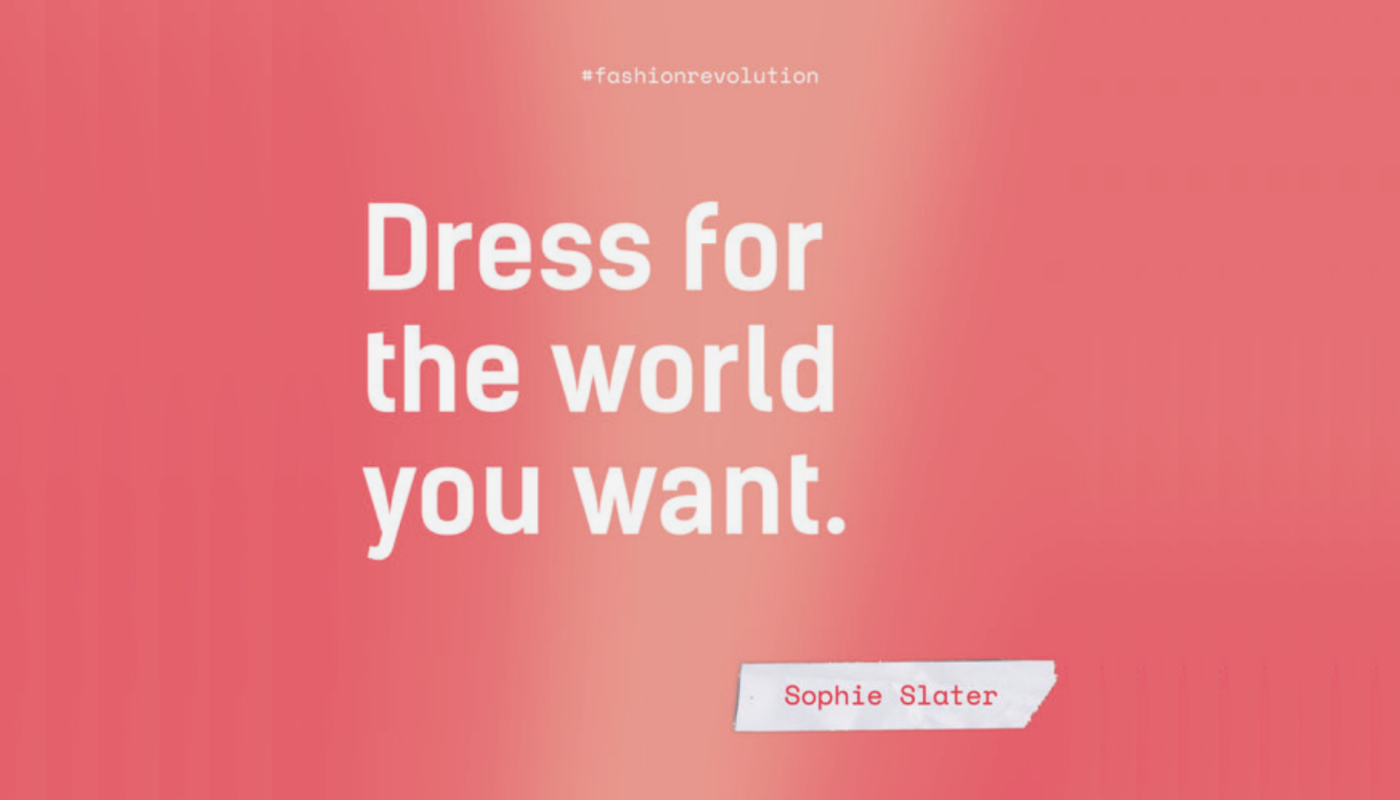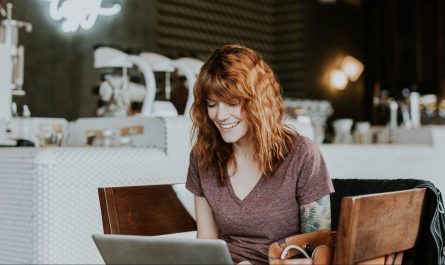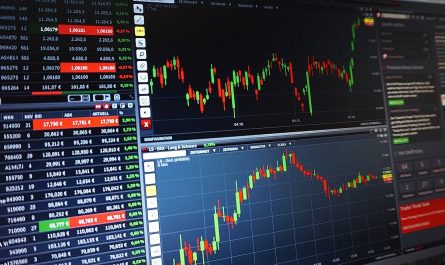In an interview with Susanne Rudolf, a member of the secretariat of Fashion Revolution Switzerland, I had the opportunity to obtain an expert opinion on sustainability in the fashion industry. Find out in the interview below what she says about the potential of second-hand fashion and what it takes to achieve more sustainability in the fashion industry.
About Fashion Revolution: Fashion Revolution is a non-profit international movement working for a more transparent and, therefore, more sustainable supply chain in the fashion industry. The aim is to change the production and consumption of fashion items radically. The association has also been active in Switzerland since 2016.
You are a member of the secretariat of Fashion Revolution Switzerland. What is your typical field of activity and what is currently at the top of your priority list?
We are five people who work for the secretariat of Fashion Revolution Switzerland, all voluntarily. I am responsible for member communication, fundraising, and finances. But since I have campaign experience from previous jobs, I am also active there. Fashion Revolution Switzerland is still in its early stages in Switzerland. Our main goal is to sensitize people to sustainable fashion and inform them about alternatives on how to avoid the destructive fashion system. There are still many people who do not know how their T-shirt is made. Our goal is to change attitudes towards clothing. However, a structural change can only be achieved if consumers appreciate their clothes more, in the sense of “What you wear matters”. Our biggest activity is the Fashion Revolution Week, which is dedicated to the anniversary of the tragic factory collapse at Rana Plaza. This year, however, about 50-60 events had to be canceled, including the Fashion Revolution Week. So we communicated a lot on Instagram to make people aware of the topic. Another topic that is currently on our minds is the effects of COVID-19. The fashion industry has suffered enormously, both large and small labels. If exemplary labels do not survive, important alternatives will be missing. Consumers need to be reminded that their buying decisions have an influence; in other words: “What you buy matters”.
There are various ways to make fashion more sustainable. What do you think is the most promising approach?
The fashion industry is very complex, from cotton cultivation and chemicals to all the waste in landfills, recycling, or working conditions. Due to that complexity, there is no one-fits-all solution for the industry. The only comprehensive solution would necessitate a change of attitude towards clothing in general. If everybody would value clothes differently and respect the work and resources put into them more, we would wear them longer, buy less, mend them, pass them on, and be prepared to pay a higher price for good value products. Second-hand, for example, is certainly a good alternative to the current system. Still, there is no comprehensive approach that would solve the whole problem.
What is your attitude towards second-hand fashion and how sustainable is it in your opinion? What are the advantages and what are the disadvantages?
The advantage of second-hand fashion is that one reduces their ecological footprint because the clothes are generally worn longer and existing resources are reused. The disadvantage is that second-hand does not fix the destructive mechanism the textile industry is running on, especially when it comes to overproduction. For example, second-hand fashion does not necessarily change people’s mass consumption behavior. Although the search process for second-hand clothes takes longer, they can still be bought in large quantities. Another negative aspect of second-hand is the aspect of flooding African markets with second-hand clothes. Only a moderate proportion of the clothes is returned to the market in the countries where they were sold. The remainder is exported, including, by the way, the leftovers from overproduction. Out of sight, out of mind…
Second-hand fashion is very popular in certain countries. How do you estimate the potential for second-hand fashion in Switzerland?
So Switzerland is always a bit behind (laughs). However, the trend exists, and there is certainly a market for it in Switzerland. Second-hand purchases are increasing, and the fashion industry is investing in second-hand platforms. The growth of second-hand fashion has even exceeded the growth of fast fashion in recent years. However, I do not believe that people in Switzerland buy cheap second-hand clothes. In some countries, people have to switch to second-hand clothes due to economic necessity. But in Switzerland, most people have money and are willing to spend it. Here I see more potential for expensive items that can be bought second-hand at a lower price. Or shops with special offers, for example, if they offer unique collections for a particular style. I think this could also be successful in Switzerland.
What do you think of online second-hand platforms such as Depop or Kleiderkreisel?
I actually find such platforms very cool. Sure, a lot is sent back and forth, but we live in a globalized world. Our food comes from everywhere, even if it is organic or fair trade. And in the end, the ecological costs are still lower than buying everything new. What I also like about these platforms is that the prejudices against second-hand fashion are being eliminated, because it is presented in a cool and modern way and is easily accessible. Moreover, some platforms are limited to Europe, for example. You can simply concentrate on these if worldwide shipping bothers you.
What do you think about the fact that Zalando now wants to enter the second-hand market?
For me, this is a sign that a market exists and that this market is growing. However, Zalando remains Zalando, and working conditions are not improving as a result. You will have a section with a more sustainable offer like a fair trade shelf in a supermarket. However, this does not change the attitude of consumers. On the contrary, the vouchers will again be used to shop at Zalando.
What do you see as the biggest challenge in making fashion more sustainable in Switzerland?
Actually, there are no differences between Switzerland and other countries. People generally lack awareness of what it takes to make clothes. Clothes have become a disposable product. If people started to value clothes more, we would already have taken the most significant step towards sustainability. What is missing everywhere is the visibility of exemplary labels. Furthermore, there are still prejudices against sustainable clothing, such as expensive and not stylish clothing.
What advice do you give students who would like to achieve a more sustainable fashion consumption?
Second-hand fashion is great, especially if you have a low budget and want to experiment with fashion. Another great alternative would be to rent, borrow, or swap with friends. This also brings much variety to your wardrobe. On the other hand, you should always think about whether you really need the item you are looking at and how often you will wear it. You do not need ten cocktail dresses; you probably only wear them once. In this case, it would be a good alternative to rent a dress. And if you buy less, you have more money to buy something of higher quality. My advice is only to buy what you really love.
Now, we are already coming to an end. Do you have a closing statement?
What you wear matters! Every garment has a history, has an origin, and is produced with a lot of energy. What you wear is not only a stylistic statement but also an ethical one. With our wallet, we decide in which direction the industry will develop and what kind of sustainability we want. And what is also important for Fashion Revolution is that people continue to be excited about fashion. This is also possible with second-hand, upcycling, and all the great options you have.
I hope you enjoyed Susanne’s insights as much as I did! Are you interested in participating in the activities of Fashion Revolution and making a positive impact on the fashion industry? Here you can find out what opportunities you have – there is something for everyone.
https://www.youtube.com/watch?v=xbvl7RimJu4&feature=emb_title




Super interesting interview Anja, good job. It’s always lovely to hear opinions from someone in the industry 🙂
Thank you Vero 🙂 happy to hear you like it!
What a great interview! It’s very interesting to me that so many of our issues (fast fashion, food waste, etc.) are ultimately in our hands as consumers. If we would collectively be able to change our attitudes to simply VALUE clothes/food/etc. we would wake up to the unsustainable world we’ve helped create. I think going by “only buy what you really love” is really great advice! It’s OK to go shopping and come home empty-handed.
Hey Olivier, thanks for your comment! I love your opinion on this! Totally agree with you 🙂 Because everything is always immediately available, we no longer think about the consequences.